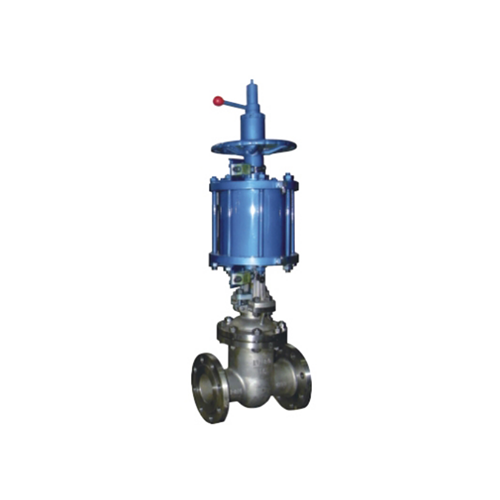
Ball Valve Certification Requirements for Export Markets
Introduction
Ball valves are critical components in various industries, including oil and gas, water treatment, chemical processing, and power generation. To ensure safety, reliability, and compliance with international standards, manufacturers must obtain relevant certifications before exporting ball valves to different markets. This document outlines the key certification requirements for major export markets, including North America, Europe, Asia, and the Middle East.
---
1. North American Market (USA & Canada)
1.1 American Petroleum Institute (API) Standards
- API 6D: Specifies requirements for pipeline and industrial ball valves.
- API 607/6FA: Covers fire-safe testing for ball valves.
- API 598: Defines valve inspection and testing procedures.
1.2 American Society of Mechanical Engineers (ASME) Standards
- ASME B16.34: Covers pressure-temperature ratings for valves.
- ASME B16.10: Specifies face-to-face dimensions for valves.
- ASME B16.5: Defines flanged valve dimensions.
1.3 Underwriters Laboratories (UL) Certification
- Required for valves used in fire protection systems (UL 429, UL 1091).
1.4 Canadian Standards Association (CSA)
- CSA B51: Covers pressure piping and boiler safety.
- CSA Z245.1: For steel pipeline valves.
1.5 National Sanitation Foundation (NSF)
- NSF/ANSI 61: Ensures materials are safe for drinking water applications.
1.6 Environmental Protection Agency (EPA)
- Compliance with EPA 40 CFR Part 60 for fugitive emissions control.
---
2. European Market (EU & UK)
2.1 Pressure Equipment Directive (PED 2014/68/EU)
- Category I-IV: Classification based on pressure and fluid type.
- CE Marking: Mandatory for compliance with PED.
2.2 ATEX Directive (2014/34/EU)
- Required for valves used in explosive atmospheres (ATEX Zones 0, 1, 2).
2.3 ISO Standards
- ISO 17292: Specifies metal ball valve requirements.
- ISO 14313: Covers pipeline ball valves (equivalent to API 6D).
2.4 British Standards (BS)
- BS EN 12266: Valve testing standards.
- BS 6364: For cryogenic valves.
2.5 Water Regulations Advisory Scheme (WRAS)
- Ensures compliance with UK water safety regulations.
2.6 UKCA Marking (Post-Brexit)
- Required for valves sold in the UK.
---
3. Asian Market (China, Japan, South Korea, India)
3.1 China (GB Standards & CCC Certification)
- GB/T 12237: Industrial ball valve standards.
- GB/T 26480: Fire-safe testing.
- CCC Certification: Required for certain industrial valves.
3.2 Japan (JIS & METI Certification)
- JIS B 2001: General valve standards.
- JIS B 2071: High-pressure ball valves.
- METI Certification: Required for industrial valves.
3.3 South Korea (KS & KCs Certification)
- KS B 1501: Industrial valve standards.
- KCs Mark: For safety compliance.
3.4 India (BIS & PESO Certification)
- IS 14846: Industrial ball valve standards.
- BIS Certification: Mandatory for certain valves.
- PESO Approval: Required for valves used in hazardous environments.
---
4. Middle Eastern Market (GCC & Saudi Arabia)
4.1 Gulf Cooperation Council (GCC) Certification
- G-Mark: Required for valves sold in GCC countries (Saudi Arabia, UAE, Qatar, etc.).
4.2 Saudi Arabian Standards Organization (SASO)
- SASO ISO 17292: Equivalent to ISO standards.
- SASO IECEx: For explosive environments.
4.3 Abu Dhabi Quality and Conformity Council (ADQCC)
- ADQCC Certification: Ensures compliance with UAE standards.
---
5. International Standards & Additional Certifications
5.1 ISO 9001:2015 (Quality Management)
- Ensures consistent manufacturing quality.
5.2 ISO 14001 (Environmental Management)
- Demonstrates commitment to environmental sustainability.
5.3 API Monogram Program
- Indicates compliance with API standards.
5.4 Fugitive Emissions Compliance (ISO 15848, TA-Luft)
- Required for low-emission valves in Europe and North America.
5.5 NACE MR0175/ISO 15156
- For valves used in sour (H₂S) environments.
5.6 SIL Certification (IEC 61508)
- For safety-critical applications in process industries.
---
6. Testing & Inspection Requirements
6.1 Pressure Testing
- Hydrostatic and pneumatic testing per API 598, ISO 5208, EN 12266.
6.2 Fire Testing
- API 607/6FA, ISO 10497: Ensures fire-safe performance.
6.3 Cryogenic Testing
- BS 6364, MSS SP-134: For low-temperature applications.
6.4 Material Testing
- ASTM, EN, JIS: Ensures material compliance.
6.5 Fugitive Emissions Testing
- ISO 15848, API 641, TA-Luft: For low-leakage valves.
---
7. Documentation & Traceability
- Material Test Certificates (MTC)
- Inspection & Test Plans (ITP)
- Certificates of Conformity (CoC)
- Third-Party Inspection Reports (SGS, TÜV, BV, etc.)
---
8. Conclusion
Exporting ball valves requires compliance with diverse regional and international standards. Manufacturers must ensure proper certification, testing, and documentation to meet market-specific requirements. By adhering to these regulations, companies can enhance product reliability, gain market access, and build trust with global customers.
---
This document provides a comprehensive overview of certification requirements for ball valves in key export markets. For detailed compliance, manufacturers should consult certification bodies and regulatory authorities in target regions.
Este sitio web utiliza cookies para garantizar que obtenga la mejor experiencia en nuestro sitio web.
Comentario
(0)